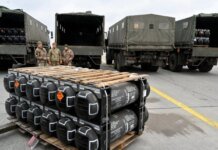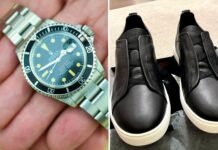Executive Summary – Who Needs a Curved Board and Why
Most people treat whiteboards like background furniture. But when your day is filled with stand-ups, planning walls, training sessions, or client workshops, the board becomes a performance tool. An anatomical (curved) writing board aligns with the way humans actually look, reach, and read, which means less strain, clearer off-axis visibility, and faster group alignment. If you routinely write for 30 minutes or more, use the board’s top and bottom edges, or need everyone to read from the sides, a curved surface isn’t a luxury – it’s the right tool for the job.
What Is an Anatomical Writing Board?
An anatomical writing board is a wall-mounted surface with a gentle, consistent radius designed around human posture and sightlines. Unlike a flat board, a curved board subtly brings edge content toward the viewer, reduces glare hotspots, and supports shoulder-led writing arcs. The curvature is mild – you still draw straight lines and readable text – but the experience is different: more natural, less tiring.
Form Factor – Curvature, Finishes, Sizes
- Curvature: Subtle radius that preserves straight-edge work while improving comfort and off-axis readability.
- Finishes: Satin ceramic steel, refined laminates, or glass with low-glare coatings – all chosen to erase cleanly and resist ghosting.
- Sizes: Compact boards for phone booths and study corners; midsize for huddle rooms and home offices; large boards for project bays and classrooms.
How It Differs from Flat Whiteboards
- Sightline: Edge notes stay legible from side seats – fewer interruptions to “come read this.”
- Ergonomics: The surface meets your hand at a friendlier angle, lowering wrist torque and shoulder shrug.
- Flow: Groups write, read, and decide with fewer micro-frictions, so sessions finish earlier and stick better.
Ergonomic Rationale – Anatomy, Reach, and Sightlines
Healthy mechanics are the quiet foundation of productive sessions. The curve does three things particularly well.
Neutral Wrist and Shoulder Mechanics
On a curved surface, long strokes are driven by the elbow and shoulder – joints built for repetition – while the wrist stays neutral for fine control. Result: cleaner handwriting and fewer shakes late in long sessions.
Eye Line and Wide-Angle Readability
The surface subtly wraps toward viewers, keeping text size more consistent across the board. That reduces head tilting and lets off-axis participants read without moving their chairs.
Fatigue Reduction in Long Sessions
Reduced reach at the extreme top and bottom means less accumulated strain. Over a 45-minute stand-up or a 2-hour workshop, those micro-savings translate to more attention and better decisions.
Task Families That Benefit Most
Facilitation & Stand-ups – 30–90 Minute Sessions
Daily stand-ups, retrospectives, and decision workshops thrive on speed and clarity.
Sprint Reviews, Retros, Decision Workshops
- Benefit: Wide-angle readability prevents side-seat confusion; facilitators write at full size without compressing at corners.
- Outcome: Fewer clarifying questions, tighter timeboxes, clearer action items.
Wall-Scale Planning – Roadmaps, Kanban, PI Planning
When your wall is the plan, the surface must support dense, legible content.
Swimlanes, Dependencies, Backlog Grooming
- Benefit: Curvature makes far-edge items readable and camera-friendly for hybrid teams.
- Outcome: Faster grooming, cleaner snapshots for minutes or wikis, less rework after the meeting.
Teaching & Training – Classrooms and Seminar Rooms
Teachers use 100% of the surface – top formulas, bottom examples, side diagrams.
STEM Problem Solving, Language Boards, Exam Prep
- Benefit: Students across the room read edge content without repositioning; instructors write longer without wrist fatigue.
- Outcome: Smoother pacing, fewer “can you rewrite that?” interruptions.
Creative Studios – Storyboarding, Critiques, Layouts
From thumbnails to shot lists to mark-ups, creative sessions require broad gestural marks.
Arcs, Gesture Marks, Iterative Mark-ups
- Benefit: Shoulder-led arcs feel stable, producing cleaner curves and consistent lettering.
- Outcome: Faster iterations, better photos of boards for handoff to editing suites or DAMs.
Client Sessions – Briefings, Pitches, Co-creation
Clients notice clarity and polish – both in presentation and in the room itself.
Agenda Framing, Live Edits, Consensus Mapping
- Benefit: Premium form factor with low glare supports filming and photography; edge notes remain readable from lounge seating.
- Outcome: Crisper story flow, fewer pauses for repositioning, more visible value.
Health-Sensitive Roles – High-Frequency Writers
Scrum masters, trainers, lecturers, product managers – anyone who writes on the board every day.
Coaches, Trainers, Facilitators, Lecturers
- Benefit: Neutral posture reduces neck, shoulder, and wrist load.
- Outcome: Sustainable daily use – people write longer with better legibility.
Hybrid Meetings – Camera-Friendly Visibility
Boards often face webcams or room cameras.
Low Glare, Edge Legibility, Photo Capture
- Benefit: The curve evens light across the surface, reducing blown-out patches and dark edges.
- Outcome: Remote participants read more, guess less; one photo captures everything.
How to Choose the Right Curved Board for Each Task
Size and Radius – Matching Room Size and Viewing Distance
- Compact (≤ 900 mm): Phone booths, desks, apartments – personal workflows.
- Midsize (900–1400 mm): Huddle rooms, home offices, small classrooms – most stand-ups.
- Large (≥ 1400 mm): Project bays, training rooms – roadmaps and multi-team planning.
Pick the smallest board that’s readable from your worst seat; match the radius to allow straight-edge work without feeling domed.
Surface Options – Ceramic Steel, Glass, Laminates
- Ceramic steel: Magnetic, tough, excellent ghosting resistance.
- Glass (low-glare): Premium look, wipes clean, great for client spaces and filming.
- Laminates: Warm aesthetic, budget-friendly, refined textures for everyday writing.
Accessories – Trays, Magnetic Rulers, Grid Overlays
Edge trays, microfiber sets, flexible curves, magnetic rulers that follow the radius, and reusable grid overlays for sprints or storyboards keep layouts tidy.
Setup & Placement – Height, Lighting, Mounting
Home vs. Office Configurations
- Home: Bias the centerline slightly lower for mixed heights and seated work.
- Office: Place the visual apex near average standing eye level; leave 90–120 cm in front for a natural stance and group viewing.
Glare Control and Camera Framing
Use side lighting from the hand-opposite wall and diffuse overheads. For hybrid rooms, place the board opposite the camera; satin finishes keep exposure even across the curve.
Mounting Basics
Follow manufacturer standoff spacing and wall-type anchors. For glass partitions or thin modular walls, use rated mounting kits or a freestanding frame.
Workflow Patterns – Using the Curve to Speed Outcomes
Center-Critical, Edge-Context Layout
Place today’s objective and key decisions in the center field; park secondary notes and references at the edges. Curvature keeps both legible without crowding.
Color Coding and Legend Discipline
Use three to five colors – max – with a tiny legend. The board’s clarity works best when your color rules are simple and consistent.
Photo Capture and Digital Handoff
End each session with a single photo from the room’s primary seat. The curved surface keeps brightness even so you can attach the image directly to tickets, notes, or wikis.
Metrics That Prove Value
Meeting Duration, Participation, Re-reads
Track a two-week baseline on a flat board and compare:
- Median meeting length and 90th percentile duration
- Speakers per session and edge-seat contributions
- Count of “what does that say?” moments or chair moves
Comfort Scores and Adoption Rates
Quick post-session polls on neck/shoulder/wrist comfort, plus usage stats (sessions per week, time at board) reveal whether the curved surface is becoming the team’s default.
Pitfalls & Fixes
Wrong Height, Harsh Down-lights, Surface Misuse
- Too high/low: Realign the center to eye level for the most common posture.
- Hotspots: Swap to diffused side lighting or satin finishes.
- Marker issues: Use low-odor, non-permanent markers; avoid solvent cleaners that damage coatings.
Paper, Tapes, and Marker Best Practices
If you pin paper to the board, choose low-tack tapes that don’t leave residue. Store markers tip-down and replace regularly to avoid ghosting from dry tips.
Mini Case Snapshots – Home and Office Scenarios
Family HQ – Weekly Planning and Chores
A midsize curved board in a kitchen or hallway becomes the family’s operating system. Weekly schedule in the center, chores and reminders at the edges. Everyone can read from different approach angles – no crowding at one spot.
Huddle Room – Stand-ups and Roadmaps
In a small meeting room, a large curved board keeps sprint goals central and swimlanes readable from side chairs. The facilitator writes full-size at the top and bottom without shrinking or laddering. Meetings end on schedule because alignment happens sooner.
FAQs
1) Will the curve distort straight lines or diagrams?
No – the radius is intentionally gentle. You still draw straight lines, use rulers, and read text normally. The curve changes how you view and reach, not how ink lands.
2) How do I pick a size for my room?
Choose the smallest width that’s legible from your worst seat. As a rule of thumb, board width should be at least one-third of the viewing distance.
3) Is a curved board helpful for hybrid meetings?
Yes – the curve spreads light more evenly and reduces edge glare, so cameras capture the whole board without blown-out hotspots.
4) Can I use magnets and accessories?
If the surface is ceramic steel or backed appropriately, standard neodymium magnets, magnetic rulers, and card holders work fine. Check the product specs for magnet strength ratings.
5) What maintenance keeps the surface looking new?
Daily microfiber dry-wipe, weekly alcohol-free clean. Avoid abrasives and permanent markers; store markers tip-down and replace them regularly.
Conclusion – A New Baseline for Everyday Writing Tasks
Not every team needs a curved board – but the ones who write often, use the whole surface, and depend on quick, shared understanding absolutely do. An anatomical writing board aligns the surface to people, not the other way around. The payoff is practical – shorter meetings, cleaner snapshots, less strain – and cultural – better participation and momentum. If three or more of your tasks live on the wall, it’s time to upgrade the wall itself.





























